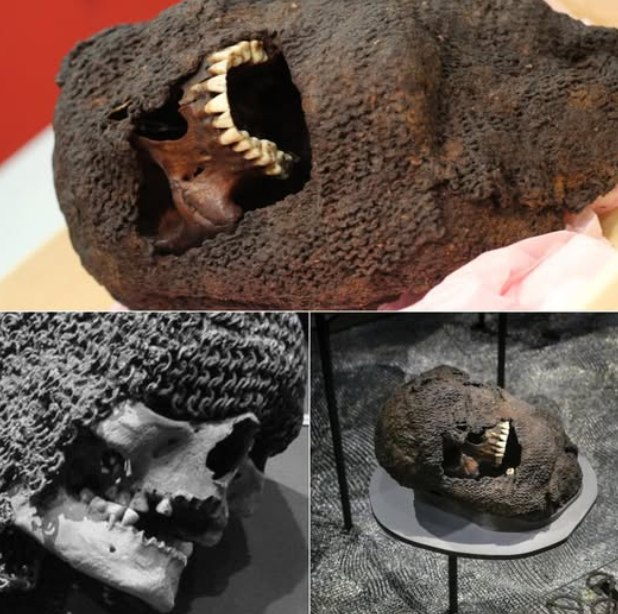Chilling Legacy of War: Skull of a Soldier in Chainmail from 1361
From the cold soil of Sweden, archaeologists have unearthed a haunting sight: a soldier’s skull still intact in its 1361 chainmail helmet. The discovery reveals a dark and realistic side of medieval warfare.
In 2013, while excavating the Visby battlefield on the Swedish island of Gotland, an archaeology team found a unique skeleton. What made the discovery stand out was the chainmail coif still wrapped around the soldier’s skull – a poignant testament to the bloody battle that took place in 1361 between Gotland militia and the Danish army.

The Battle of Visby was one of the most brutal battles of the Northern European Middle Ages. King Valdemar Atterdag of Denmark led 2,000 men to attack the island of Gotland, which had only about 2,000 ill-trained and ill-equipped militiamen. Thousands were killed, many still wearing their full armor, and buried in unmarked mass graves.
Skull in Armor – A Living History Picture
The chainmail helmet, made of thousands of interwoven metal rings, was a common type of armor in the 14th century to protect the head and neck from blows. The fact that the helmet remained in its original shape and was close to the skull suggests that the soldier was probably killed quickly in battle, without the opportunity to remove his armor before being buried.
This is not only physical evidence, but also a vivid symbol of the fierce cost of war.
The discovery allows scientists to study more closely the methods of fighting, military organization, and burial of the dead in the Middle Ages. It also highlights the human side of archaeology – that each skeleton is a person who lived, fought, and died.
The skull in the armor is more than just an archaeological relic. It is a haunting reminder of the brutality of war, and of the anonymous people who have fallen in the pages of history that we sometimes only glance at.
